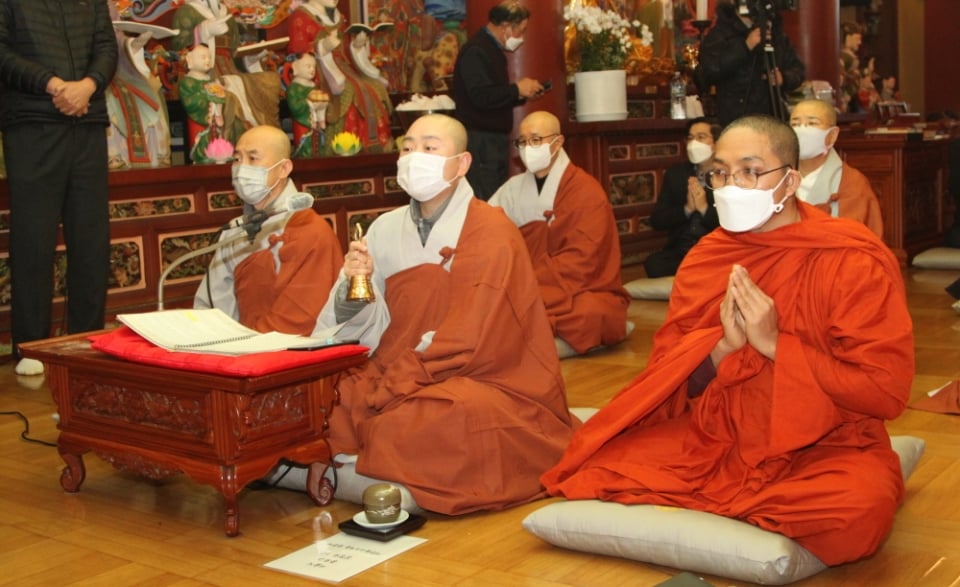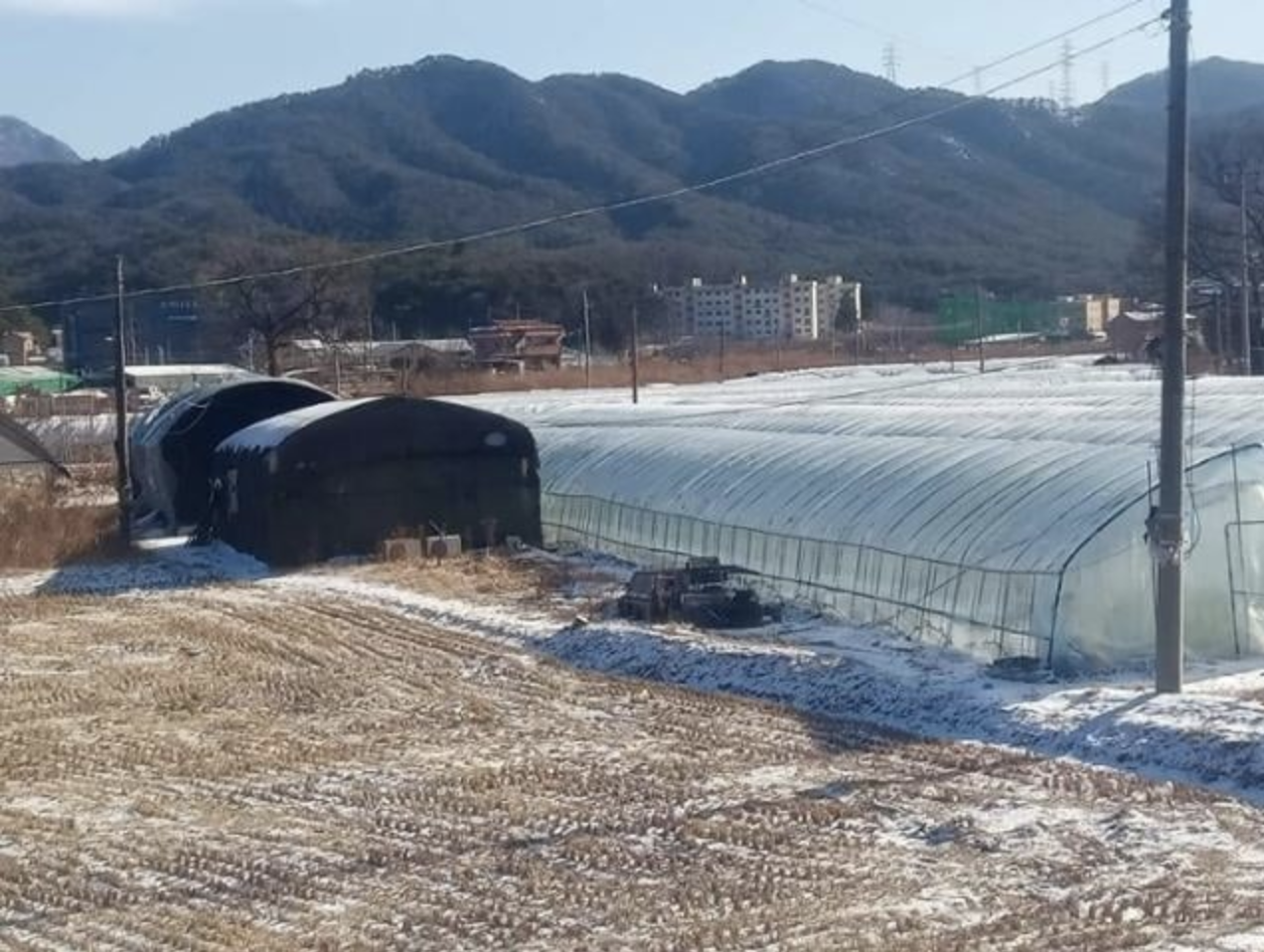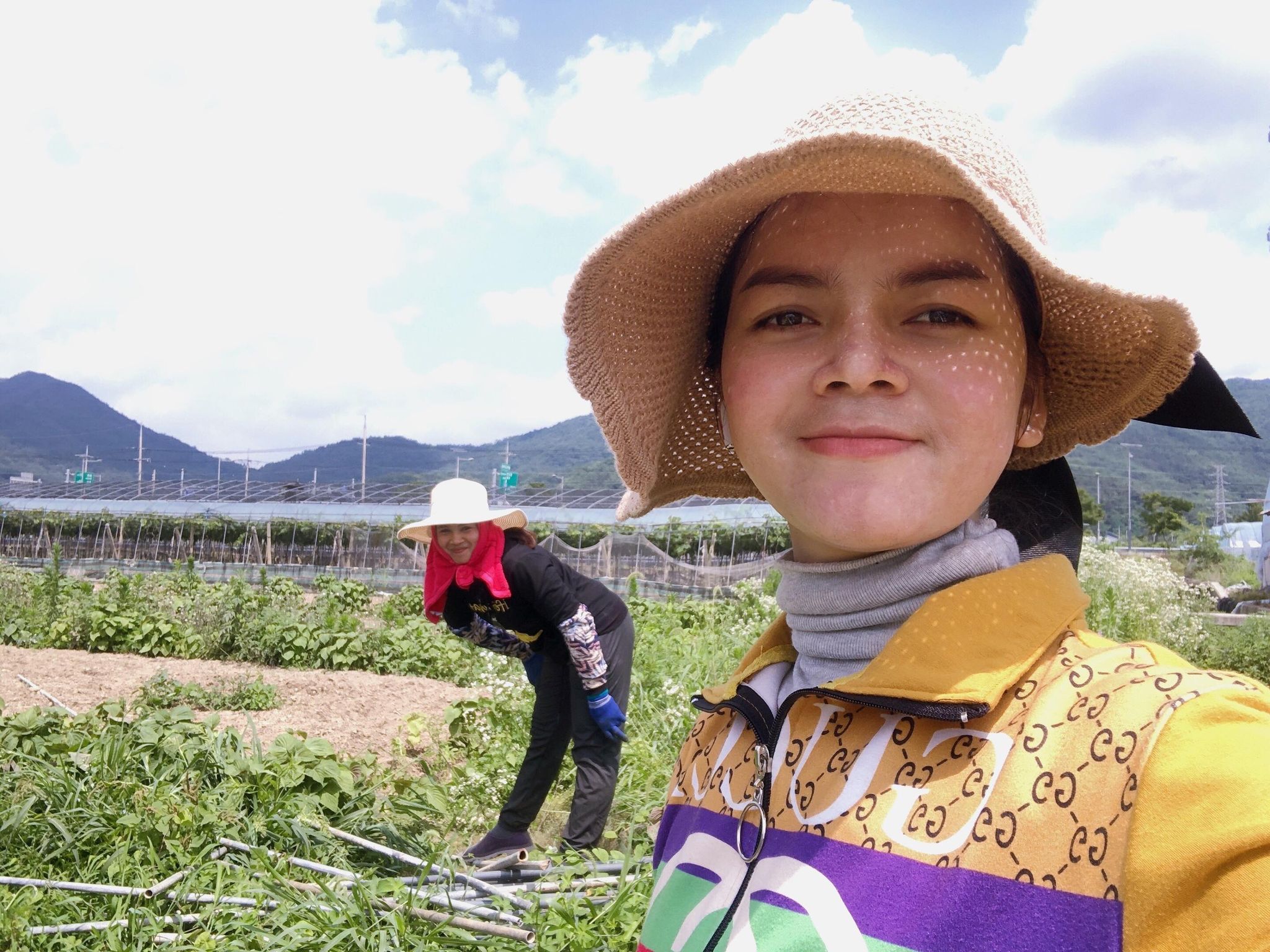The migrant farm workers were upset about the electricity cuts in their dormitory in Pocheon, South Korea. Their living quarters inside a poorly insulated vinyl greenhouse grew more frigid as temperatures plunged in December last year.
“The workers had requested the boss for many days to fix the electricity but the boss dismissed the requests,” said Rin Saro, a Cambodian monk and labour rights activist in South Korea.
The workers eventually sought warmer shelter with friends, except for 31-year-old Cambodian Nuon Sokkheng, who stayed behind despite the minus 18 degree Celsius (minus 0.4 Fahrenheit) weather on 20 December.
She died alone in her sleep.
Following an investigation sparked by a public outcry, South Korean authorities and the Cambodian ambassador to South Korea said the cause of death was cirrhosis of the liver. Human rights activists from both countries who spoke with co-workers claim Sokkheng’s living and working conditions directly contributed to her death.
The case drew attention to the difficult circumstances facing migrant workers under South Korea’s Employment Permit System (EPS). The programme registers agricultural, industrial and construction labourers from more than a dozen Asian countries, including many who reportedly live in greenhouses and shipping containers while working long hours for abusive bosses.
A government survey found about 70% of migrant workers in the agriculture and fishing industries stay in provisional shelters provided by employers. Within weeks of Sokkheng’s death, the government banned vinyl greenhouses and makeshift structures to house workers. But labour activists and Cambodian migrant workers told the Globe the reforms are far from sufficient.
“Lots of similar cases have happened before,” Saro said. “[Sokkheng’s] death has made a massive impact for all the Cambodian migrants in Korea. This is the 21st century and it needs to be changed.”

Cambodians account for about 50,000 of up to 250,000 EPS migrant workers in South Korea, officially the Republic of Korea. The EPS system allows Cambodians to send home $700 to $1,000 monthly, generating about $500 million in annual remittance before Covid-19 struck, according to Long Dimanche, Cambodia’s ambassador to South Korea in 2020. He said the majority of Cambodia’s population is under 35 years old, offering a large number of labourers who can benefit the economy through funds sent home.
South Korea began importing foreign labour in large numbers – between 100,000 and 160,000 annually from 1992 to 1996, according to one study – before opening diplomatic relations with Cambodia in 1997. As part of its attempts to increase immigration to offset a shrinking population, South Korea signed an agreement this year to receive more Cambodian workers.
The opportunity can be life changing, offering migrants up to 20 times what they might earn for the same job in Cambodia. But getting to South Korea through EPS is a competitive, difficult process requiring proficiency in the Korean language even before consideration. Workers like Sokkheng also may not be aware of their vulnerabilities.
“They know only the positive sides, such as high salary, but the dark side of living there they barely know,” said Pov Sophark, a Cambodian monk and activist who works closely with South Korea’s Ministry of Labour and said there are 10,000 applicants annually for 4,000 to 5,000 EPS jobs available to Cambodians.
According to Saro, 19 other Cambodian workers died in South Korea in 2020, mostly men and all under 40, He believes poor nutrition, sleep deprivation and overwork contributed to many of the deaths, even if they were classified differently.
“Almost all the death cases are identified as heart attacks, according to the medical documents,” said Saro, who has conducted cremations for Cambodians, including Sokkheng.
They know only the positive sides, such as high salary, but the dark side of living there they barely know
Dimanche disputed Saro’s death toll, telling the Globe that tens of thousands of Cambodians besides EPS workers live in Korea.
“All the data of the people who died doesn’t mean they are all migrants. Some died of the accident, some died of suicide, some died because of the natural causes,” he said. “The number of 19 people who died is not entirely migrants, so I don’t think the number is accurate.”
Migrant worker deaths under ill-defined circumstances are not uncommon, though. A December 2020 Reuters report found 522 Thais had died in South Korea since 2015, nearly half due to unknown causes.
Sokkheng’s sister in Cambodia was surprised to learn of the cirrhosis ruling, explaining that Sokkheng checked in daily and “never complained about her health once. Then there’s [a Facebook] post saying she died from liver disease, I just don’t understand.”
Sokkheng’s co-workers initially spoke with human rights activists, but soon went silent. None responded to interview requests.

The conditions in which Sokkheng lived before her fatal misfortune mirror those encountered by other Cambodians seeking higher earnings abroad.
“I heard about the high salary [in Korea], because in Cambodia, we have to spend more years studying in order to get that high salary,” said Sreyleak Ngea, who followed her four siblings when she moved to South Korea five years ago.
Sreyleak studied Korean through a $100 course and waited a year for her application to be approved. She also needed cultural training, a health check and a plane trip she funded with a $3,000 bank loan. Workers from Cambodia, where the average annual income is around $1,500, can go into debt while paying thousands of dollars for classes, health insurance and travel.
Sreyleak said she quickly found the reality was a harsh departure from the promises of her contract. Her accommodation was a shipping container shared with two other Cambodians, where she estimated the temperatures ranged from 35 to minus 15 degrees Celsius (95 to 5 Fahrenheit). The farm also used a dormitory bathroom to grow fertilizer with processed waste, causing a terrible stink.
She toiled from 6:30am until 7:30pm picking perilla leaves, commonly used in Korean cuisine, with only two days off per month and a half-hour for lunch. Overtime pay never materialised.
While South Korea law mandates eight-hour work shifts and rest days, Article 63 of the Labour Standards Act excludes farming and fishing workers. Agricultural employers control hours worked and must pay overtime, but migrants are commonly cheated out of hundreds or even thousands of dollars, Amnesty International reported in 2014.
Most low-skill agriculture jobs are held by migrants who typically work 50 hours more per month than their contracts specify. But even when violations are reported, legal sanctions occur in only 1% of cases.
Migrants seeking a new post must obtain a release from their employers and are penalised for changing jobs unless they can prove there was abuse. Without a job change, the E-9 ‘non-professional employment’ visa expires after four years and ten months.
I don’t even have time to go to the restroom so I have to pee in the same place I pick
“I possess an E-9 visa, which means I don’t have [many] rights to do a lot of things and am often neglected by the employers,” said Sreyleak, who believes agricultural employees are paid less than industrial workers to boost profits.
“If I don’t work hard, I won’t receive the money,” Sreyleak said. “I tried to boost my productivity, so in winter my hands got swollen and I even cried while working. It’s exhausting working here, it’s like working in the rice field back home.”
Sreyleak said her boss required daily production of at least 16 boxes of 1,000 perilla leaves tied in packs of ten, a time consuming process.
“Sometimes I can finish up to 24 boxes a day, but inhumanly. I don’t even have time to go to the restroom so I have to pee in the same place I pick,” Sreyleak said, explaining that she endured because she could send home at least $1,000 monthly while keeping only a couple hundred for herself.
“I wanted to come back and give up on everything every time,” she said. “But my friends and my family have always been supportive and encouraged me to work harder.”

Sreyleak eventually discovered resources to help her escape the exhausting conditions. Ichan Kim, known among Cambodian workers as ‘Lok Kru’ (teacher), is a long-time South Korean labour rights activist who speaks some Khmer. The former documentary filmmaker founded Earthian Station, a NGO providing workers rights seminars and counseling.
Aided by Kim and with nine months left on her original contract, Sreyleak switched from picking perilla to working in a mushroom factory. She also realised her boss was not counting all her boxes and she is owed $6,000 plus a bonus her employer refused to pay. She is suing for the unpaid wages.
Sreyleak said she was “blackmailed” to return to Cambodia under the threat of legal action. But she no longer fears expulsion “because I know my rights now and what [my employer] did was wrong.”
“Migrant workers now can fight back [against] exploitation or abuse from their employers,” Sreyleak said. “And after the Sokkheng case, the Korean government stopped turning blind eyes on us, which gives us more courage to fight back against the employers.”


